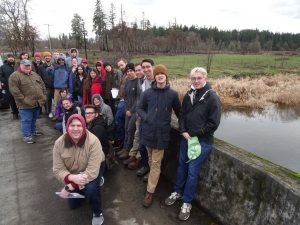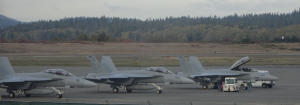
Winter 2019 project by the students of
A People’s Geography of American Empire
on the military bases of western Washington
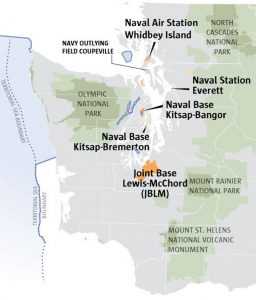
A People’s Geography of American Empire was a Fall 2018 – Winter 2019 program at The Evergreen State College, in Olympia, Washington. In this Winter 2019 website project, students researched and documented the Northwest military installations Joint Base Lewis-McChord (JBLM), Naval Base Kitsap (NBK), and Naval Air Station Whidbey Island (NASWI), as case studies of land acquisition, place-making, deployment, and dissent.
The program looked at U.S. expansion, from Manifest Destiny and overseas imperial conquests, to present-day resource wars. It focused on the place-making processes inherent in each stage of expansion, and on the imprints they have left on the human and physical landscape. It examined imperial places that have been shaped by each era of expansion, and in turn have shaped each era. We studied the continuous historical arc of expansion, from the Indian frontier wars to colonialism in the Pacific and Caribbean, to occupations in Middle East “tribal regions.”
This expansion has come full circle as immigrants arrive from formerly colonized lands, and wars at home are waged against occupied communities. In addition to the origins and rationales underlying each stage of expansion, we explored how and to what extent the world’s landscape reflects and helps to (re)produce imperial power. The program aimed to interconnect global and local scales, foreign and domestic policies, and past histories and present-day legacies. It examined the lasting imprints of imperial control on real local places, in particular the network of U.S. military bases and counterinsurgency campaigns around the world.
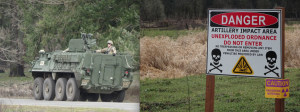
The program made a geographical contribution to the study of American Empire by examining the making and remaking of imperial places, and using place-based approaches to examine hierarchies of race, nationality, class, and gender. Imperial places also offer stories of cooperation and resilience, healing, and hope. The class heard from speakers about Iraq, Central America, the Philippines, Okinawa, Guåhan (Guam), and Hawai’i.
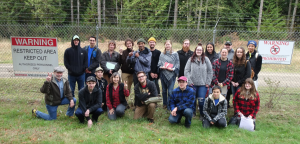
The “A People’s Geography of American Empire” class took field trips to Naval Air Station Whidbey Island and Naval Base Kitsap in October 2018, and to Joint Base Lewis-McChord (guided by Army and Nisqually Tribe employees) in January 2019.
We hope our class website project contributes to the knowledge and debate around these local sites of global consequence. We created this site in hopes that it will be a tool for the public to get an overview of the topics, and to get informed about military installations in our state. The references noted on each page are intended to assist public research.
Any opinions expressed on this website are those of the students, faculty, and/or their research sources, not of other students or faculty in the program, or of The Evergreen State College.
